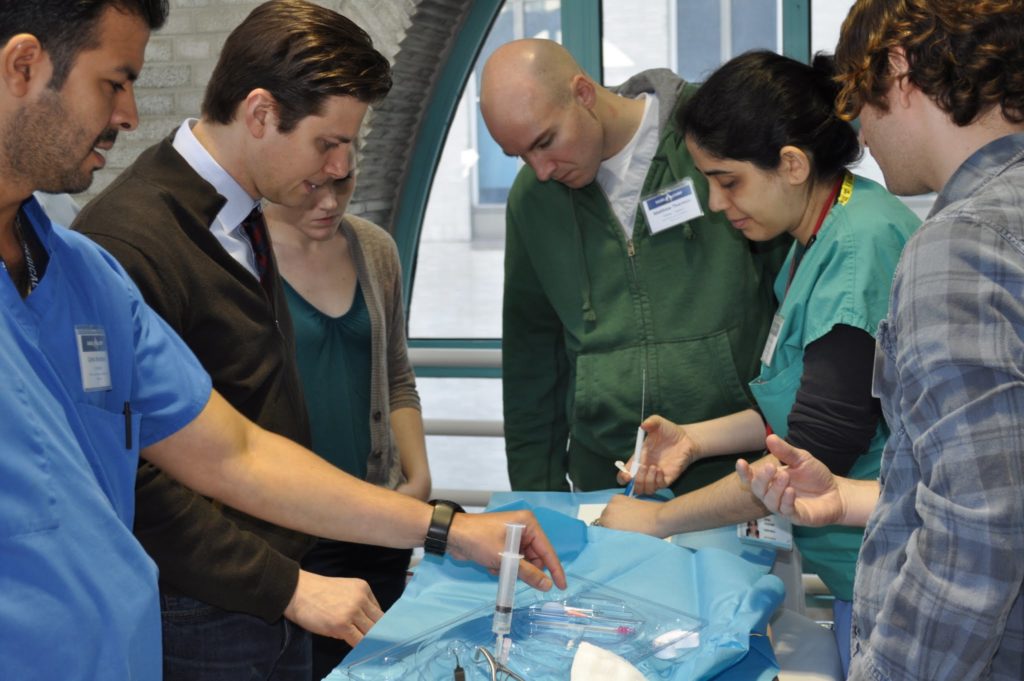Community Emergency Department Simulation in Maryland
Community Emergency Department Simulation in Maryland through a grant to Johns Hopkins School of Medicine led by Dr. Jessica Katznelson
The R Baby family knows that one in five US children seeks emergency medical treatment annually, and the vast majority are seen in our community hospitals. ERs are complex and chaotic environments often filled to capacity with patients of multiple levels of need: decisions and therapeutic interventions need to occur rapidly. Children are particularly vulnerable to these problems, especially in the Community Hospital ER setting, where the staff is often less familiar with and less prepared to provide pediatric care. Infants are especially at risk to be the victims of misdiagnosis and medical errors.
We know that simulation in high-risk healthcare settings has been shown to improve knowledge, team performance, acquisition of skills, and provider comfort level. While we continue to expand our simulation training through ImPACTS, more community hospitals seek our training and education. Johns Hopkins is a participating site for ImPACTS and is currently doing research on the similarities and differences in infant care between community hospital EDs and pediatric centers. In addition to collecting important data, the consortium utilizes these scenarios to provide education and to do quality improvement work with the community hospital ERs and all of their providers.
Through the support of R Baby’s Maryland Chapter, Johns Hopkins, led by Dr. Jessica Katznelson, has provided quarterly simulation sessions to two community hospitals in the Baltimore area. Both hospitals have successfully completed the full year program and the success has been so impactful, they are entering a second year of training to reach more members of their staff. In addition, three additional hospitals will participate in the training.
These sites are not staffed by pediatric emergency medicine physicians nor do they use pediatric ER trained nurses when caring for its sickest infants. This training provides critical education to these ERs. The curriculum consists of:
- Standardized scenarios run at each site on a quarterly basis.
- Each session consists of two scenarios, each repeated once so two multidisciplinary groups can participate each time.
- Sessions are videotaped for later review.
- An on-site debriefing immediately following each scenario.
In addition, each hospital receives a written debrief which highlights strengths and areas for improvement and makes specific suggestions on how to move forward with the needed changes. The project coordinator and additional faculty form the Pediatric Emergency Medicine group at Johns Hopkins and provide ongoing support and education to the ERs as needed between the quarterly simulations.
Repeated simulations allow for ongoing practice with caring for acutely ill or injured infants and for testing changes in a safe setting. All ER staff (physician, nursing, nursing aids, respiratory therapists, support staff) are expected to participate in the simulation program, thus impacting all of the providers who care for sick infants and thus the care of all babies seen in the ER.
Standardized debriefing forms are completed following each scenario. A record of suggested changes is kept and followed up on. In addition, data collected (including videotapes) are reviewed by the R Baby funded IMPACTS team to look at the execution of selected critical tasks and to compare the two participating hospitals with all of the other community ERs that have already participated in the IMPACTS project.
The results of the project will be shared with the participating sites and more widely in the pediatric and emergency medicine communities through publication and presentation at local and national meetings thus impacting even more doctors.
